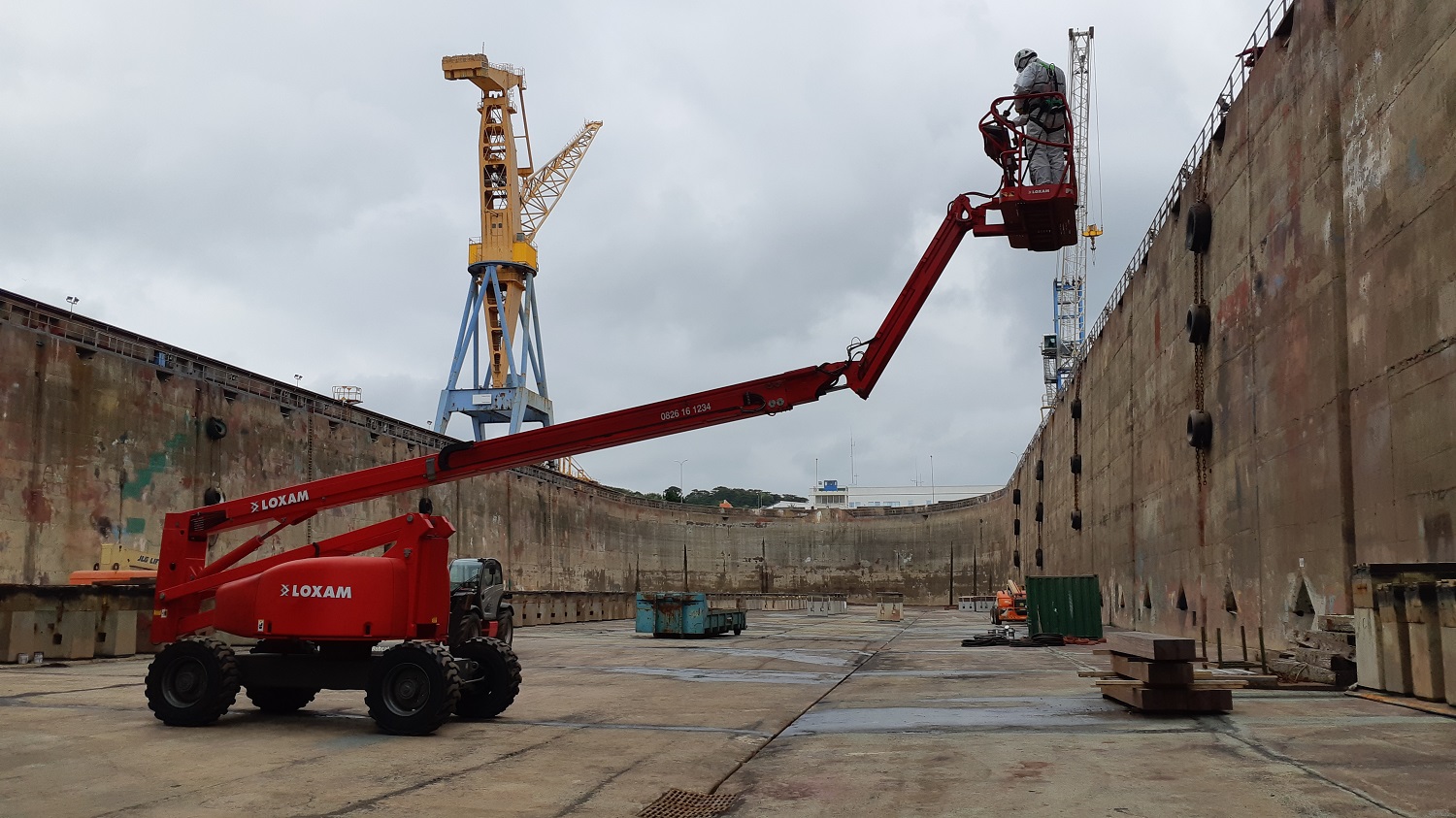A non-standard project carried out in very short time, thanks to the flexibility of all stakeholders
The West Brittany metropolitan CCI has undertaken a renovation project for the lock gate form 3 at the port of Brest, financed by the Brittany region. The latter had never been moved since its construction in the late 1970s. These renovations, necessary for the sustainability of the structure, focused mainly on the change of docking timber, the corrosion treatment of steel elements, the repair of gaskets, etc. Built on site in prestressed concrete, this lock gate had never been moved for more than 40 years! “One of the particularities of this structure is that it was made of prestressed concrete. Regarding the material aspect, concrete acts as a protective layer of metal reinforcements protecting them from external aggressions and thus reinforces the sustainability of the work”, highlights Benjamin Trinel, Head of the Lerm agency in Rennes. This service had started at the beginning of 2017 for the setec group, involving different subsidiaries of the group, setec tpi, diadès and lerm. Setec tpi, as agent, was in charge of the modeling and recalculation of the structure, the monitoring of operations and the good understanding of the customer’s expectations. Diadès was responsible for the detailed inspection and in charge of control of the radiography tests carried out by Cerema, whereas le lerm was in charge of the diagnosis of the concrete and the prestressing. A first stage, launched in 2017, took place with the lock gate in place in the form. For this second stage, the CCI took the boat out of shape and transported it to another nearby form, out of water, which made it possible to continue the diagnostic operations carried out in 2017 and to carry out the repair work. “Our mission is to provide the contractor with concrete and prestress condition information, through structural investigations, non-destructive testing, radar testing, corrosion potential measurements, core sampling, openings in way of prestressing, and residual tension measurements with the crossbow, on inaccessible parts (in water) during the first stage”,continues Benjamin Trinel. These investigations make it possible to provide the data necessary to recalculate the structure of the work and to better understand its sustainability. “One of the main challenges was to complete these studies during the renovation work, which was underway. We coordinated our operations by inserting ourselves into a global refit operation that involved difficult response conditions with very tight deadlines. The engineers and technicians of our group which were present on the spot had to be very flexible, intervene at night or at weekends, with strong constraints, inherent in radiography tests and interventions in sub-Section 4 related to the presence of asbestos. It is also worth mentioning the flexibility of the owner, who has managed to allow everyone to work in good conditions, by combining all the constraints”, he concludes. The No. 3 refit form is an asset for the Port of Brest in the competitive world market of ship repair: of rare dimensions, 420 meters by 80 meters, it can indeed accommodate very large ships. Benjamin.trinel@setec.com Christophe.chanonier@setec.com Tancrede.de-folleville@setec.com 


